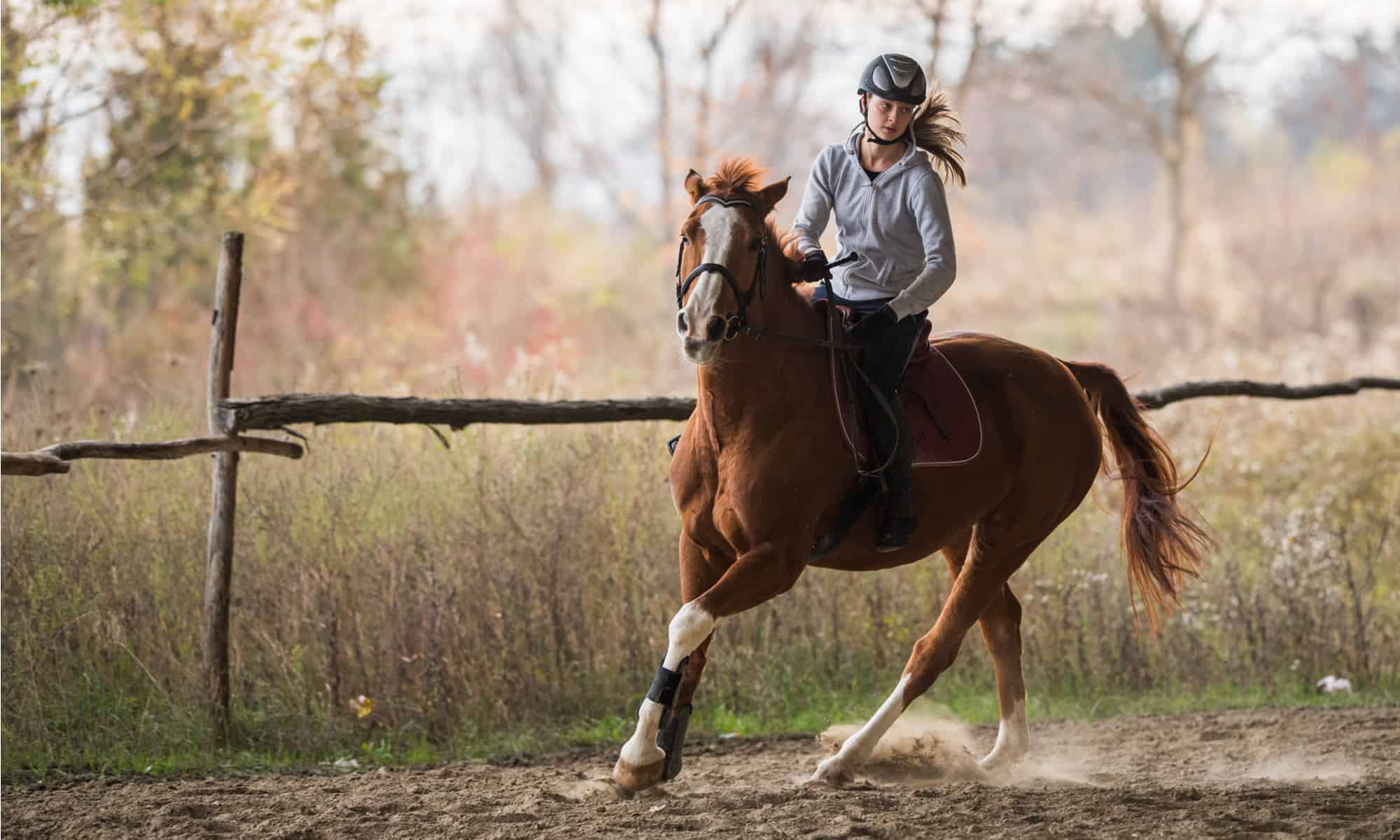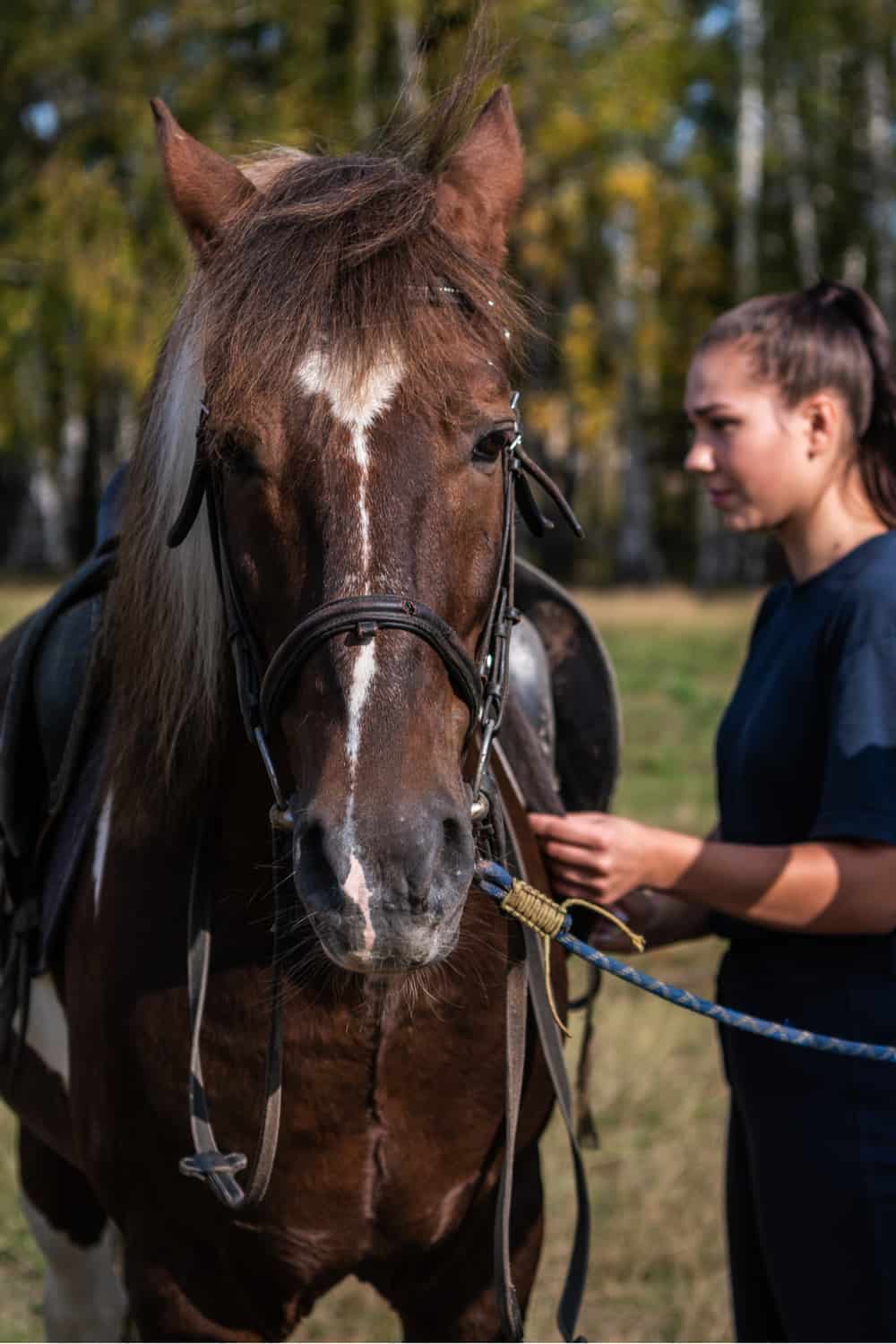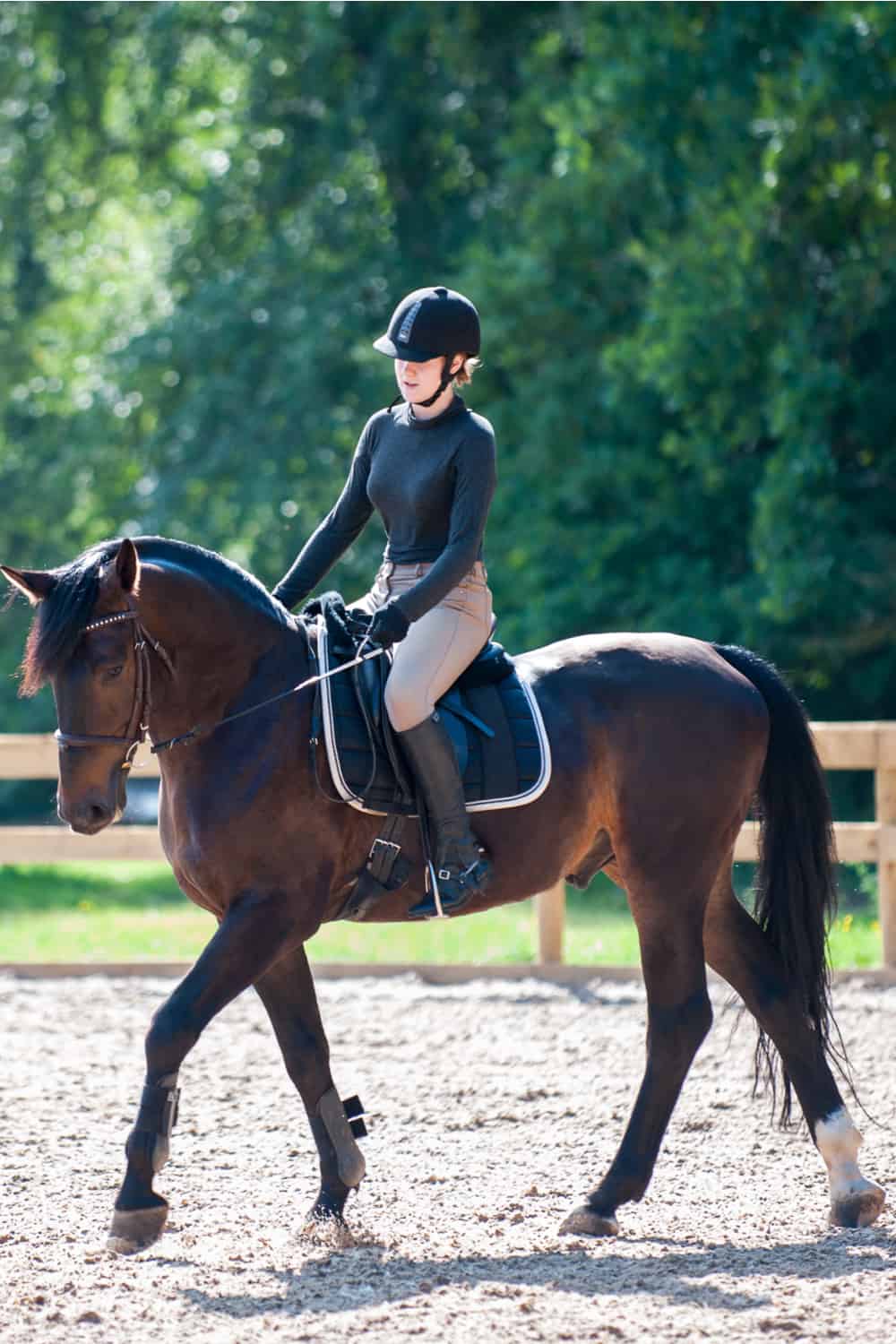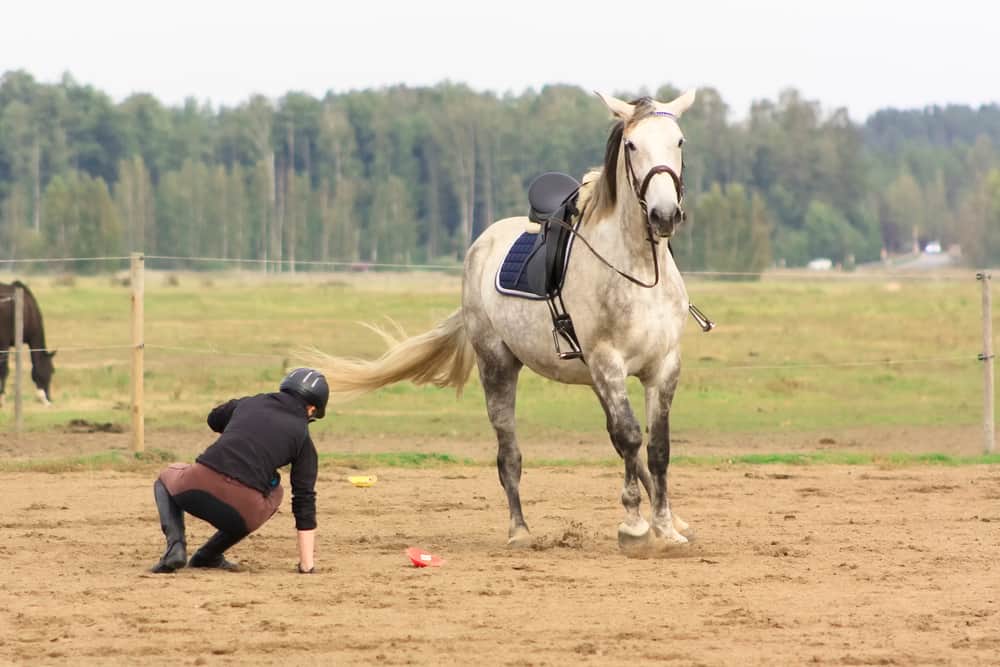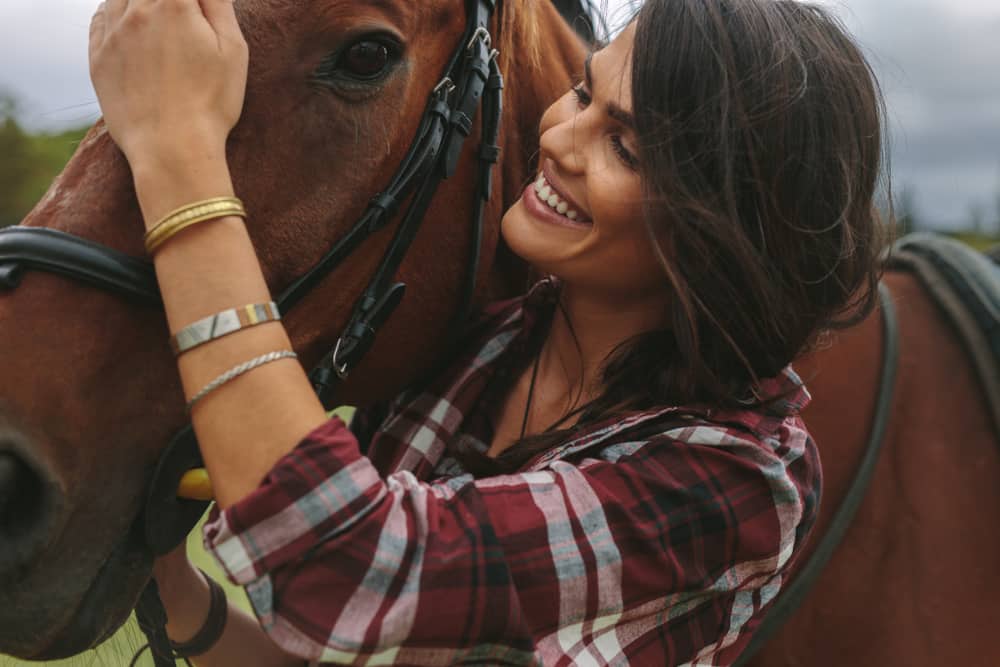On the surface, western riding often looks like a piece of cake, but truth is, creating that impression calls for hard work, adequate preparation, and good horsemanship.
If you are planning to go out on your first ride, follow this guide to the end. We share amazing tips to ride a horse western style, so you can act, feel, and look more like a seasoned rider. So, bring your saddle, and let’s go pull some cool cowboy stunts, shall we?
1. Get a Horse That Matches Your Riding Ability
First things first; get a matching horse. Your instructor should know which horse suits you the best based on your riding ability. So, if you have never ridden before, they should assign you a horse that is slower, thicker, and with a generally calm temperament.
If you are given a jumpy, restless horse or one that seems less comfortable than what you are used to, speak up right away. Even if you have ridden western before, it’s best to play safe when you are with new horses.
It will be more dangerous (and more embarrassing) when your horse gets out of control during the ride than if you say something now.
2. Hold Your Reins Properly
Western style horse riding dictates that both reins be held only in one hand, which is in contrast with English style riding where the reins are held in two hands. A single hold allows your arms to rest a little bit and enables the horse to control his head in a more relaxed manner.
When you want your horse to make a turn, move the hand holding the reins slightly forward and toward the side you wish the horse to go. Most western riders will also adjust their bodies in the direction they want their horse to turn; it gives the horse a clearer signal.
Here is a video that explains how to properly hold the reins when riding your horse in the western style.
3. Keep Your Eyes Up
When you go out for western horse-riding training, the first thing your instructor will tell you is to keep your eyes on where you want the horse to go. While this advice may be overused, looking down can throw off your ride.
Keeping your eyes up not only helps you see where you are headed; it also helps you maintain balance, which in turn enables you to balance the horse. The more stable you are, the better your equine will walk.
4. Learn the Western Lingo
This is not just to enrich your vocabulary but also to understand other riders when they talk about the different horse colors, tack components, and horse gaits. That way, you can get involved in the conversation and learn more about western riding.
If you are conversant with English riding, you may not have much trouble learning western. However, some things may be named differently, and you will want to familiarize yourself with these before you go.
5. Ride Like a Real Cowboy (Pro Position)
Sit upright with your body weight deeply distributed in the saddle. Then, relax your back and let your hips move with your horse’s movement. Also, hold the reins gently with relaxed arms and stay centered in the saddle.
If you follow these tricks, you will create a comfortable ride both for you and for your equine. It’s how real cowboys do it, and you will surely look like a born and bred rider.
But you ought to feel the part to look the part. That said, this is not the day to wear house shoes and baggy sweat pants. You will end up feeling and looking silly and awkward (if your instructor even allows you to ride in those).
Instead, put on a comfortable pair of cowboy boots, jeans, and a shirt. You can add extra layers depending on the weather. Layers are important if it is cold outside, as you can easily remove one at a time when it begins to get warm. Also, the jeans should be stretchy enough to keep your legs comfortable.
If you don’t own any cowboy boots, consider getting a pair before you go for the ride, and especially if western riding is something you plan to do for a long time. But if it’s just a one-time adventure, you can wear any boots with a small heel. No flat converse!
6. Know That It’s Okay to Fall
When you are just getting started with western riding, or any other form of horse riding for that matter, don’t go expecting to do things perfectly the first time. Even pro riders mess up all the time.
One of the things most new riders are afraid of is falling, and this is not only because it makes them look silly and unskilled but also because falling is plain scary.
But when you are a new rider, know that it is okay to fall. Laugh about it, brush the dirt off, and hop back up. No matter what happens, pick yourself up and keep riding. Importantly, enjoy yourself.
Usually, falling from a horse is not a biggie; you will mostly not break anything. Just make sure to roll so you can reduce impact on your joints. It will also get you falling further from the horse’s hooves. If you get injured, however, don’t be afraid to inform your instructor.
Unfortunately, the only true remedy for falling off is actually falling. Once it happens one time, you will realize that it is really not something to worry about. You can try vaulting, however, where you are taught how to fall properly. It will help you get more confident.
7. Try Not to Be Nervous
Keeping your nerves to a minimum can be tough especially if it is your first time riding a horse, but it’s important.
A horse will be very sensitive to the rider’s emotions. It will know when you are happy and relaxed as well as when you are nervous and frightened. And because horses don’t generally consider themselves scary, they will not think for a single second that they are the reason for your nervousness.
Instead, they will think there’s something scary close by and they too will start to get nervous. And horses, being mainly flight animals, the first thing that will come to mind when they get scared is running. They will become flighty, jumpy, or basically less compliant.
There are several things you can do to calm yourself down before hopping onto your horse and during the ride. For example:
- Take a deep breath.
- Talk to other riders.
- Talk to your horse and become friends.
- Stick to the safety precautions given by your instructor.
- Don’t be afraid to mess up.
8. Show Some Love and Affection
Horses, like humans, love to be pampered; they can tell when you are not giving them the attention they need.
That said, you ought to be affectionate toward your horse. Things like patting them often and reminding them how good they are will go a long way in making your horse feel loved. And this doesn’t apply only to western riding but to other riding styles as well.
It would help to know the name of your horse too before you start. But just doing this won’t be enough; use the name often throughout the ride. It will help create a stronger bond between you two.
You may also consider bringing some treats. Horses love apples, whole carrots, and sugar cubes, and they will love you right back if you pamper them with some of these munchies. Just don’t forget to check with your instructor first; some people keep their horses on special diets.
9. Don’t Be Afraid to Ask Questions and Interact With Other Riders
Clearing doubts by asking questions and talking to other riders or horse owners can go a long way in decreasing nerves. Learn more about the horses by asking how they are taken care of and how the riding facility operates.
You can also ask how many horses are in the facility, how old the horse you will be riding is, how many riders visit the premises in a day or so, what food the horses eat, whether the horses take part in any competitions, etc.
Such questions not only help you better know your horse and the entire facility but also guarantee your safety. They help you decide whether you will want to continue going there too. Remember, western riding is not just about hopping on the horse’s back and riding but enjoying the entire experience.
The Takeaway
When it comes to riding a horse the western style, the most important thing you can do is be confident in yourself, relax, and have fun. If you are scared, your horse will get nervous too and won’t be so cooperative.
It is also imperative that you ask questions before the ride so you can learn more not only about your horse but also about the ride in general. And, hey, do not take yourself too seriously; it is okay to make mistakes.
